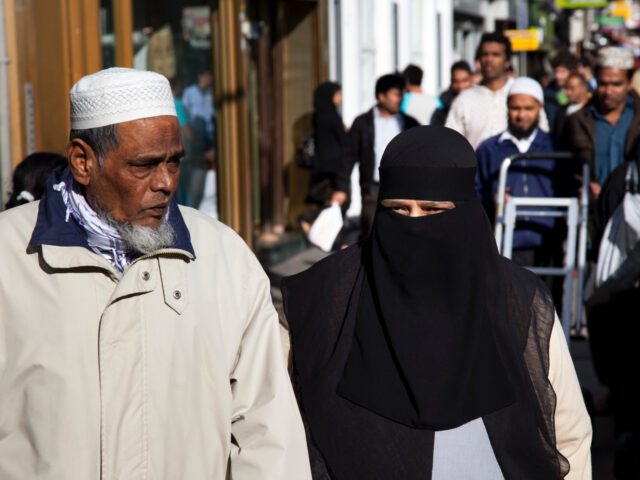Analysis of Census figures by a leading left-wing newspaper in Britain purported to show that there is a “worrying correlation” between the most impoverished regions of the country and Muslim populations.
Results from the 2021 Census released this week found that 39 per cent of Muslims are currently inhabiting the most deprived areas of England and Wales, The Guardian newspaper reported.
The left-wing broadsheet said that while the Muslim population of Britain, which accounts for 3.9 million people, has begun to shift away from urban centres, there is still a “worrying correlation between the areas with the worst levels of deprivation and the percentage share of Muslims.”
The Census results, according to the paper, went on to show that 61 per cent of Muslims live in the lowest 40 per cent of areas in England and Wales on the deprivation score. Conversely, a paltry four per cent of Muslims inhabit the top 20 per cent of neighbourhoods.
Since the 2011 Census, the Muslim population has risen by 1.2 million to a total of 3.9 million, representing 6.5 per cent of the entire population, an increase from 4.9 per cent a decade ago and up from 2.9 per cent in 2001.
As was the case in the previous Census, the London Borough of Tower Hamlets recorded the highest percentage of people who described themselves as Muslim, with nearly 4 in 10 residents (39.9 per cent) identifying as such. The borough holds the distinction of being the most deprived area in London and the home to the highest level of child poverty. Tower Hamlets was followed by Blackburn with Darwen (35 per cent) and Newham (34.8 per cent).
Another area that recorded a comparatively high Muslim population of over 30 per cent was Luton, which joined the likes of Birmingham and Leicester among the ranks of cities in which native Britons have become a minority in their own home.
It comes as the majority of people in England and Wales no longer profess to believe in Christianity, likely the first time since the 7th Century AD that this was the case. The Census found that just 46.2 per cent of people list themselves as Christians, as atheism and Islam rose in the rankings.
Birmingham and Leicester Become Minority-Majority Cities as Native England Population Falls Below 75 Per Centhttps://t.co/UQ9iOKWs4P
— Breitbart London (@BreitbartLondon) November 29, 2022
Meanwhile, the London Borough of Harrow remained the local authority with the highest percentage of people identifying as Hindu, who represented 25.8 per cent of the total, up from 25.3 per cent in 2011. In contrast to the deprivation seen in Tower Hamlets, Harrow ranks as one of the least deprived areas of London.
Nevertheless, campaigners claimed that the reason for the comparatively poor performance of Muslim areas was a result of government failures to prop up the communities.
The secretary-general of the Muslim Council of Britain said: “We’re now the second or third generation [of Muslims]. There’s more of us here. Yet, we’re still in these cycles of poverty and deprivation… I think part of that is down to socio-economic conditions where people are housed and the economic opportunities available.”
“I think there’s something to really be said about what our politics and policies are doing to help those who are really suffering. There’s all these stereotypes and tropes around Muslims, but the reality is that people are actually in cycles of poverty. And these need to be broken.”
England No Longer a Christian Nation as Atheism and Islam Make Gains – Censushttps://t.co/kTFIWRg67S
— Breitbart London (@BreitbartLondon) November 29, 2022
Follow Kurt Zindulka on Twitter here @KurtZindulka

COMMENTS
Please let us know if you're having issues with commenting.